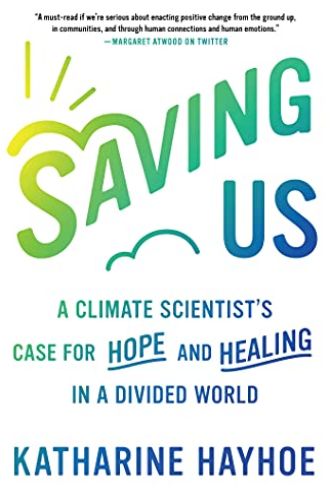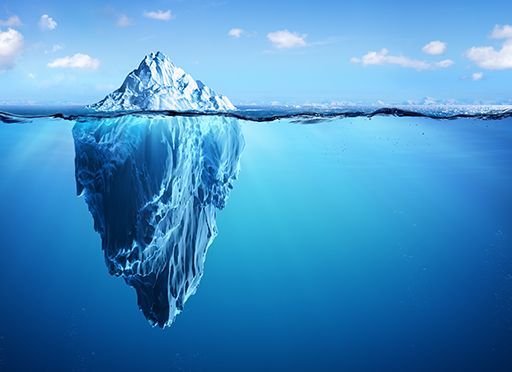Katharine Hayhoe harnesses her strong Christian faith and pragmatic legal and scientific background to explain how you can take action to mitigate climate change today.

Activism and Love
Paul W. Horn Distinguished Professor at Texas Tech University Katharine Hayhoe – a chief scientist for The Nature Conservancy – sounds the clarion call: Climate change poses an existential threat to humanity. It may seem insurmountable due to the scale and scope of the problem and because meaningful change requires collective action, a skill humanity mostly lacks.
Hayhoe decries the tribalism, complacency and fear that fuel ignoring or denying climate change. She details why the issue remains so divisive, and yet, offers hope. In her sobering, remarkably encouraging account, Hayhoe calls for catalyzing systemic change by helping others – with love – connect their personal concerns to climate solutions.
Overcoming Polarization
Solving climate change requires discussion from a place of agreement – a common wish for a better future.
Climate is changing, humans are responsible, the impacts are serious, and the time to act is now.Katharine Hayhoe
Climate denial emerges, Hayhoe believes, from a fear of change, which fuels tribalism – a false safe haven in a world that seems beyond anyone’s control.
Only 7% of Americans refuse to consider that climate change is real, that people are its cause, that its impacts are serious and that humanity must act now. Talk to the other 93% about shared interests, the author suggests. For example, Hayhoe, a Christian, talks with other Christians about their common call to care for other people and for creation itself.
Insufficient Motivation
Neither the sun, volcanoes or orbital cycles produce climate warming. Human activity – fossil fuel burning and agriculture – causes climate change. Period.
Hotter weather associates with increased violence. Fossil fuel use generates pollution that can cause lung damage and other health problems. Flooding spreads infectious diseases. Climate change worsens hurricanes that lead to refugee crises.
But Hayhoe laments, even these facts won’t change beliefs because people vest in what they already believe. So, in climate change discussions, focus on shared values, not facts. Share possibly divisive facts with schoolchildren so they can pass them on to adults.
Love
Fear can immobilize people and lead them to pretend what frightens them doesn’t exist or to succumb to hopelessness.
Excess fear-generated stress generates negative emotions and behaviors – from depression to anger. Messages that shame a person can trigger anger and inaction.
Peer pressure is effective when there is a viable alternative.Katharine Hayhoe
To create needed change, Hayhoe believes the world needs love, which nourishes caring, inclusion, empowerment and hope – all of which can drive systemic change.
Personally Connect
Local examples and resonant personal stories can make climate change more proximate, pertinent and meaningful. Hayhoe, for example, shares her experience with weird weather and invites others to share their experiences.
Climate change isn’t a future issue. It is here and now, for all of us.Katharine Hayhoe
People who live on coastlines and in the Arctic, for example, can speak to changes they experienced directly. Hayhoe cites a skeptical Texas roofer who observed receding ice in Alaska and recognized that climate change is real.
Works Together
Some people may regard solving climate change as a threat due to fear of government involvement, a sense of inefficacy, fear of economic harm or the desire to protect what they believe.
Those who stand to lose economically help create and reinforce these feelings. For example, the Green New Deal was popular, but lost supporters after propaganda stated erroneously that it was socialistic.
If we are going to fix this thing, we need everyone to get involved.Katharine Hayhoe
Hayhoe likens the situation to a potluck meal. If everyone brings what they can, there will be enough to go around. Not everyone contributes their fair share to mitigating climate change, so you must contribute yours.
No Fossil Fuels
Use energy more efficiently and switch to electricity. Find alternatives for greenhouse-gas-emitting production of materials such as cement and steel. Geothermal energy, nuclear power and improved batteries can meet energy needs when wind and solar prove unavailable. Because the technology is largely available today, Hayhoe urges you to summon “the will and the investment” to make these alternatives a daily reality.
No safe level of carbon emissions exists. Farming, deforestation and other land use account for nearly a quarter of greenhouse gas emissions. Promote practices that encourage soil to sequester carbon, sequester carbon in rocks, turn carbon into fuel and plant trees.
To forestall disaster, stop investing in fossil fuel companies and stop using fossil fuels.
Every Person
Individual actions may seem too small to matter, Hayhoe acknowledges, but climate-friendly actions can be contagious: When one person in a neighborhood installs solar panels on their home, for example, the likelihood increases that others will, too.
One of the biggest reasons our actions matter is that what we do changes us. And the other big reason is that what we do and say changes others, too.Katharine Hayhoe
Hayhoe adopts two climate-friendly practices annually. These include reducing air travel, buying an electric vehicle, reducing her food waste and eating less meat.
Catalyze Systemic Change
Hayhoe emphasizes that your most important contribution is helping to change the system.
Repeat what you hear and reinforce thoughts that resonate. Cite famous people active on the issue, or climate scientists. Stop the conversation if it becomes uncomfortable. Use what you learn to guide your next climate conversation.
The research I do is clear: It is not too late to avoid the most serious and dangerous impacts. Our choices will determine what happens.Katharine Hayhoe
Sources of hope include technological advances, climate activism, positive actions by corporations and young people, and faith. Don’t fall prey to fatalism, complacency or unrealistic optimism. Be courageous and make what you hope for happen.
Review
Hayhoe incarnates a singular, convincing combination of profound faith and a deep legal and scientific background. Though you might think these perspectives would clash, they never do. And Hayhoe does not proselytize for her faith; she cites it as one factor among many that inspire her to action. Thus, those with different beliefs will not find her approach off-putting. Hayhoe writes mostly like a lawyer, except when she espouses the necessary primacy of love as your motivation for activism. Those passages prove the most moving and inspirational.
With Andrew Farley, Katharine Hayhoe co-wrote A Climate for Change.







